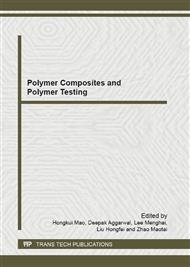p.370
p.376
p.380
p.384
p.388
p.395
p.400
p.405
p.409
Force Performance Research for the Interior Joint of New Light-Weight Portal Rigid Frame
Abstract:
The portal frame is one kind of the common structural styles in the light steel structure. And the portal frame is designed by tapered members, which can be suitable for the variety of the bending moment diagram. This paper introduces the new structure dividing the middle column into two parts on the top of the middle column and analysis the frame with SAP2000. The parameters are investigated such as the hinge joint and firm joint at the bottom of the column and also the parameter of the science of geometry, which influence the load-carrying behavior of the portal frame. The analysis gives that it’s avail for the frame if the angle of the dividing is thirty. Besides, some corresponding design proposal is obtained according to the analysis of the internal force.
Info:
Periodical:
Pages:
388-392
Citation:
Online since:
April 2012
Authors:
Price:
Сopyright:
© 2012 Trans Tech Publications Ltd. All Rights Reserved
Share:
Citation:


